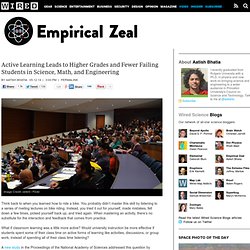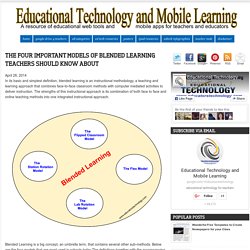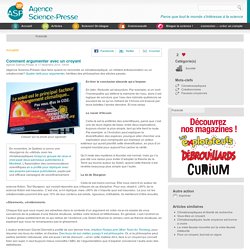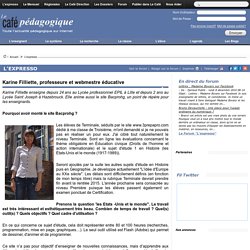

Learning is Not a Mechanism. This article was originally published on Educating Modern Learners on January 26, 2015.

“The classroom, with all its limitations, remains a location of possibility.” ~ bell hooks, Teaching to Transgress Digital pedagogy is not equivalent to teachers using digital tools. Rather, digital pedagogy demands that we think critically about our tools, demands that we reflect actively upon our own practice. So, digital pedagogy means not just drinking the Kool-Aid, but putting the Kool-Aid under a microscope. When I lead workshops for teachers interested in developing digital skills, I say right up front that I have little interest in teaching teachers or learners how to use the technologies they’ll use in classrooms for the next three years. 24 Pins on physics, app and spacecraft. An ECOMODERNIST MANIFESTO. The AI Revolution: Road to Superintelligence - Wait But Why. Being There: Heidegger on Why Our Presence Matters.
‘Print this Map. Get off the Internet. Take to the Streets': 5 of the Left’s Best Mapping Moments. Mapping and activism have a long history.

In the final days of the Paris Commune the military advances of the Versailles army were mapped on a daily basis as the revolutionaries sought to keep them at bay. Fast forward nearly 100 years and the Situationists were once again mapping Paris in altogether more abstract ways – this time to resist the advances of the modern city. In more recent times we’ve seen the rudimentary mapping of protest camps in Madrid, New York and Hong Kong.
With these in mind, here are five more seminal cartographic moments worth remembering: 1. Detroit, 1967. Have We Been Interpreting Quantum Mechanics Wrong This Whole Time? For nearly a century, “reality” has been a murky concept.

The laws of quantum physics seem to suggest that particles spend much of their time in a ghostly state, lacking even basic properties such as a definite location and instead existing everywhere and nowhere at once. Only when a particle is measured does it suddenly materialize, appearing to pick its position as if by a roll of the dice. This idea that nature is inherently probabilistic — that particles have no hard properties, only likelihoods, until they are observed — is directly implied by the standard equations of quantum mechanics. Take the active learning challenge. Active Learning Leads to Higher Grades and Fewer Failing Students in Science, Math, and Engineering. Image Credit: velkr0 / Flickr Think back to when you learned how to ride a bike.

You probably didn’t master this skill by listening to a series of riveting lectures on bike riding. Instead, you tried it out for yourself, made mistakes, fell down a few times, picked yourself back up, and tried again. When mastering an activity, there’s no substitute for the interaction and feedback that comes from practice. The Four Important Models of Blended Learning Teachers Should Know about. April 28, 2014 In its basic and simplest definition, blended learning is an instructional methodology, a teaching and learning approach that combines face-to-face classroom methods with computer mediated activities to deliver instruction.

The strengths of this instructional approach is its combination of both face to face and online teaching methods into one integrated instructional approach. Blended Learning is a big concept, an umbrella term, that contains several other sub-methods. Below are the four models that are most used in schools today.The definitions together with the accompanying videos featured here are taken from Blended Learning 101 course. This course is offered by Khan Academy ( one of the leading protagonists of blended learning approach) in partnership with the Clayton Christensen Institute and the Silicon Schools Fund.
Throwback Thursday: The greatest unsolved problem in theoretical physics (Synopsis) “Science enhances the moral value of life, because it furthers a love of truth and reverence — love of truth displaying itself in the constant endeavor to arrive at a more exact knowledge of the world of mind and matter around us, and reverence, because every advance in knowledge brings us face to face with the mystery of our own being.”

-Max Planck When it comes to our Universe, you might think we understand it pretty well. We have a full list of particles we know to exist, we understand the forces that describe their behavior, and we’ve been able to detect and measure each and every interaction between them. Image credit: NSF, DOE, LBNL, and the Contemporary Physics Education Project (CPEP). But not everything is known. Image credit: Universe-review.ca. Physics Stack Exchange. Physics. How to CURVE A LIGHT BEAM - Cool DIY Science Experiment- dartofscience. Projet Petite Poucette - Activités des élèves de C. Guerrieri. Entretien Michel Serres - REFER 2015 - Créer et utiliser des infographies en classe. Les infographies sont de plus en plus populaires, et nos étudiants en voient sans doute souvent lorsqu'ils naviguent sur internet.

Pourquoi ne pas miser sur ces outils « tendance » pour dynamiser nos cours? Les infographies, qu’est-ce que c’est? Une infographie, c’est un outil pour représenter visuellement des données de façon attrayante et percutante. Les infographies peuvent être particulièrement utiles pour présenter : des données quantitatives des graphiques (diagrammes) Voici un exemple : Évidemment, les infographies ne sont pas toutes exemplaires. Caractéristiques d’une infographie bien conçue Les infographies en éducation Dans quelles situations des infographies pourraient-elles être utilisées en classe au collégial? Pour présenter de l'information aux étudiants de façon synthétique Créez vous-même des infographies pour présenter une notion aux étudiants d’une façon visuellement attrayante. Comment argumenter avec un croyant. En tirer la conclusion absurde qui s’impose En latin: Reductio ad absurdum.

Géo : Need for grid. Create a Badge with Google Drawing. If you have thought of creating your own badges here are the steps I use in Google Draw to create them.

From Google Drive create a Google Drawing. Use the File menu to choose “Page setup…” Choose “Custom” for the drawing size and choose 300 by 300 pixels. Karine Filliette, professeure et webmestre éducative. Karine Filliette enseigne depuis 24 ans au Lycée professionnel EPIL à Lille et depuis 2 ans au Lycée Saint Joseph à Hazebrouck.

Elle anime aussi le site Bacprohg, un point de répère pour les enseignants. Faire des mathématiques en co-enseignement : une aide pour penser les mathématiques. Gagarine9 Le bilan post-séance (qui permet d'entrer dans la préparation de la séance suivante) est l’occasion de revenir sur le cas d’élèves rencontrant des difficultés portant sur l’utilisation du vocabulaire institutionnel et d’orienter les futures tâches du rituel sur cet aspect : «J’ai vu qu’I. était bien perdu, de ce que cela voulait dire, et A., A. s’en est tiré finalement sur la fin mais pour I. c’était compliqué. Apprendre et réussir. Au-delà des résistances ou parler positivement de l'éducation québécoise Depuis trop d'années, le terrain médiatique de l'éducation appartient à ceux qui manifestent leur résistance et leur opposition à tout ce qui diverge de la conception traditionnelle de l'éducation. Au XXIe siècle, plusieurs modèles alternatifs circulent et tentent d'insuffler un vent de modernisme à la pédagogie.
En ce sens, les médias sociaux facilitent une libre circulation de ces options. Writing scaffold for investigation discussion. Faire une BD. Enrichir mon cours Moodle avec les outils du Web. OSAMR Model – When Tech Makes it Worse. The SAMR model is a way to determine the level at which you are using technology. La physique quantique et le partisan des altersciences. eLearning, Education Technology and Teacher Blog.
What's in a Genius? How Popular Notions of Intelligence Are Holding Us Back. 15 Ways to Beat Procrastination [Infographic] - Essay.Expert. 15 Surprising Discoveries About Learning. Nicholas Negroponte: Nanobots in Your Brain Could Be the Future of Learning. Transcript Nicholas Negroponte: I gave a talk at the first TED in 1984 that was two hours long and it had five predictions in it that more or less all came true. And people called them predictions but they really weren’t predictions. They were extrapolations. The reason I talked for two hours is not because I was Fidel Castro and I was giving a rally. It’s because I had 15 years of research stored up and was about to open the media lab and it was real easy to talk about what we were gonna do and some of it even seemed old hat even though in retrospect people thought, oh, this is amazingly predictive. 30 years later, they say make a prediction as if I had made predictions the first time which I hadn’t.
Because if you inject tiny robots into the bloodstream they can get very close to all the cells and nerves and things in your brain, really close. Facebook et l'intelligence artificielle. Science et technologie. Le cerveau à tous les niveaux. — OpenMIND. The High Cost of Neuromyths in Education. Valid neuroscience research is an increasingly useful resource for guiding interventions in education. But not all "neurocontent" is created equal.
With the overall rise in accessible education content has come a rise in the niche of neurological educational content -- content developed for educators based on how the brain works. One of the more common snags here is the advent of "neuromyths," or content purportedly based on neuroscience that, while sounding plausible, is incorrect. Neuromyths result from unsupported claims about interventions or products supposedly "proven by neuroscience research. " These claims (usually with interventions for sale) are based on research that is either not scientifically valid or not supportive of the specific intervention being promoted. Consider the financial and socioeconomic costs of commercial products falsely claiming neuroscience proof that all learners need what they offer.
We study history, in part, to learn from the mistakes of the past.